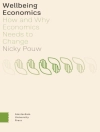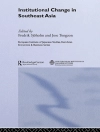An R Companion for Applied Statistics I: Basic Bivariate Techniques breaks the language of the R software down into manageable chunks in order to help students learn how to use it. R is a powerful, flexible, and free tool. However, the flexibility—which eventually becomes a great asset—can make the initial learning curve appear steep. This book introduces a few key aspects of the R tool. As readers become comfortable with these aspects, they develop a foundation from which to more thoroughly explore R and the packages available for it. This introduction does not explain every possible way to analyze data or perform a specific type of analysis. Rather, it focuses on the analyses that are traditionally included in an undergraduate statistics course and provides one or two ways to run these analyses in R. Datasets and scripts to run the examples are provided on an accompanying website. The book has been designed to be an R companion to Warner′s Applied Statistics I, Third Edition, and includes end-of-chapter instructions for replicating the examples from that book in R. However, this text can also be used as a stand-alone R guide, without reference to the Warner text.
Зміст
Preface
Acknowledgments
About the Author
Chapter 1: Introduction: What is R?
Downloading R and RStudio
Creating a Project Folder
Getting Acquainted with the RStudio Environment
Appendix 1A: Preparing RStudio Project Folder
Chapter 2: Basic Tasks in R
Coding in R: Object-Oriented Programming
Creating Data
Exporting Data
Importing Data
Converting Variables
Summary of Key Functions
Chapter 3: Frequency Tables
Frequency Tables with Quantitative Variables
Appendix 3A: R Instructions to Accompany Warner (2020a)
Chapter 4: Descriptive Statistics
Describing Central Tendency
Describing Variability
Appendix 4A: R Instructions to Accompany Warner (2020a)
Appendix 4B: Mode Function
Chapter 5: Visualizing Data: Bar Charts, Histograms, and Boxplots
Visualizing Categorical Variables
Visualizing Quantitative Variables
Visualizing and Accounting for a Second Variable
Appendix 5A: R Instructions to Accompany Warner (2020a)
Chapter 6: Evaluating Score Locations: Introducing the Normal Distribution and z Scores
Getting Familiar With New Data Frames and Variables
Cumulative Percentage
z Scores
Addressing Normality
Appendix 6A: R Instructions to Accompany Warner (2020a)
Chapter 7: Sampling Error and Confidence Intervals
Monte Carlo Simulations
Confidence Intervals
Appendix 7A: R Instructions to Accompany Warner (2020a)
Chapter 8: One-Sample t Test: Introduction to Statistical Significance Tests
Checking Assumptions
Performing One-Sample t Tests
Presenting Results
Considering Alternatives
Appendix 8A: R Instructions to Accompany Warner (2020a)
Appendix 8B: One-Sample z Test
Chapter 9: Significance Tests Continued: Effect Size and Power
Estimating the Needed Sample Size
Estimating the Obtained Power
Chapter 10: Bivariate Pearson Correlation
Checking Assumptions
Performing Pearson′s Bivariate Correlation
Considering Alternatives
Appendix 10A: R Instructions to Accompany Warner (2020a)
Chapter 11: Bivariate Regression
Checking Assumptions
Performing Bivariate Regression
Appendix 11A: R Instructions to Accompany Warner (2020a)
Chapter 12: Independent-Samples t Test
Checking Assumptions
Performing Independent-Samples t Tests
Presenting Results
Considering Alternatives
Appendix 12A: R Instructions to Accompany Warner (2020a)
Appendix 12B: Wilcoxon-Mann-Whitney U Test
Chapter 13: One-Way Between-Subjects Analysis of Variance
Checking Assumptions
Performing One-Way Between-Subjects ANOVA Tests
Presenting Results
Considering Alternatives
Appendix 13A: R Instructions to Accompany Warner (2020a)
Chapter 14: Paired-Samples t Test
Checking Assumptions
Performing Paired-Samples t Tests
Presenting Results
Considering Alternatives
Appendix 14A: R Instructions to Accompany Warner (2020a)
Chapter 15: One-Way Repeated-Measures Analysis of Variance
Checking Assumptions
Performing One-Way Repeated-Measures ANOVA Tests
Presenting Results
Considering Alternatives
Appendix 15A: R Instructions to Accompany Warner (2020a)
Chapter 16: Factorial Analysis of Variance
Checking Assumptions
Performing Two-Way Between-Subjects ANOVA Tests
Presenting Results
Considering Alternatives
Appendix 16A: R Instructions to Accompany Warner (2020a)
Appendix 16B: Converting Education Variable to Dichotomous Variable
Chapter 17: Chi-Square (?2) Test of Independence
Checking Assumptions
Performing Chi-Square (?2) Tests of Independence
Presenting Results
Considering Alternatives
Appendix 17A: R Instructions to Accompany Warner (2020a)
Chapter 18: Parting THoughts About R
Moving Forward
Continuing to Learn R
References
Про автора
Danney Rasco is an Assistant Professor in the Department of Psychology, Sociology, and Social Work at West Texas A&M University. As a self-professed stats nerd, he enjoys (yes, enjoys) teaching three or four sections of statistics each year and simply smiles and shrugs when students shake their heads at his enthusiasm and zeal for data and the beautiful sport of number crunching. In his “free” time, he plans statistics workshops because he is a glutton for punishment. This love for statistics and teaching (i.e., nerdiness) resulted in a Summer Teaching Assistant Fellowship from the University of New Hampshire, an Intellectual Contribution Award from the College of Education and Social Sciences at West Texas A&M University. Dr. Rasco has a master’s degree in clinical and counseling psychology from Midwestern State University, a master’s degree and Ph D in social psychology from the University of New Hampshire, and a Cognate in College Teaching from the University of New Hampshire. One day he will buy frames, perhaps with the proceeds from this book, and display these degrees proudly on a wall.












